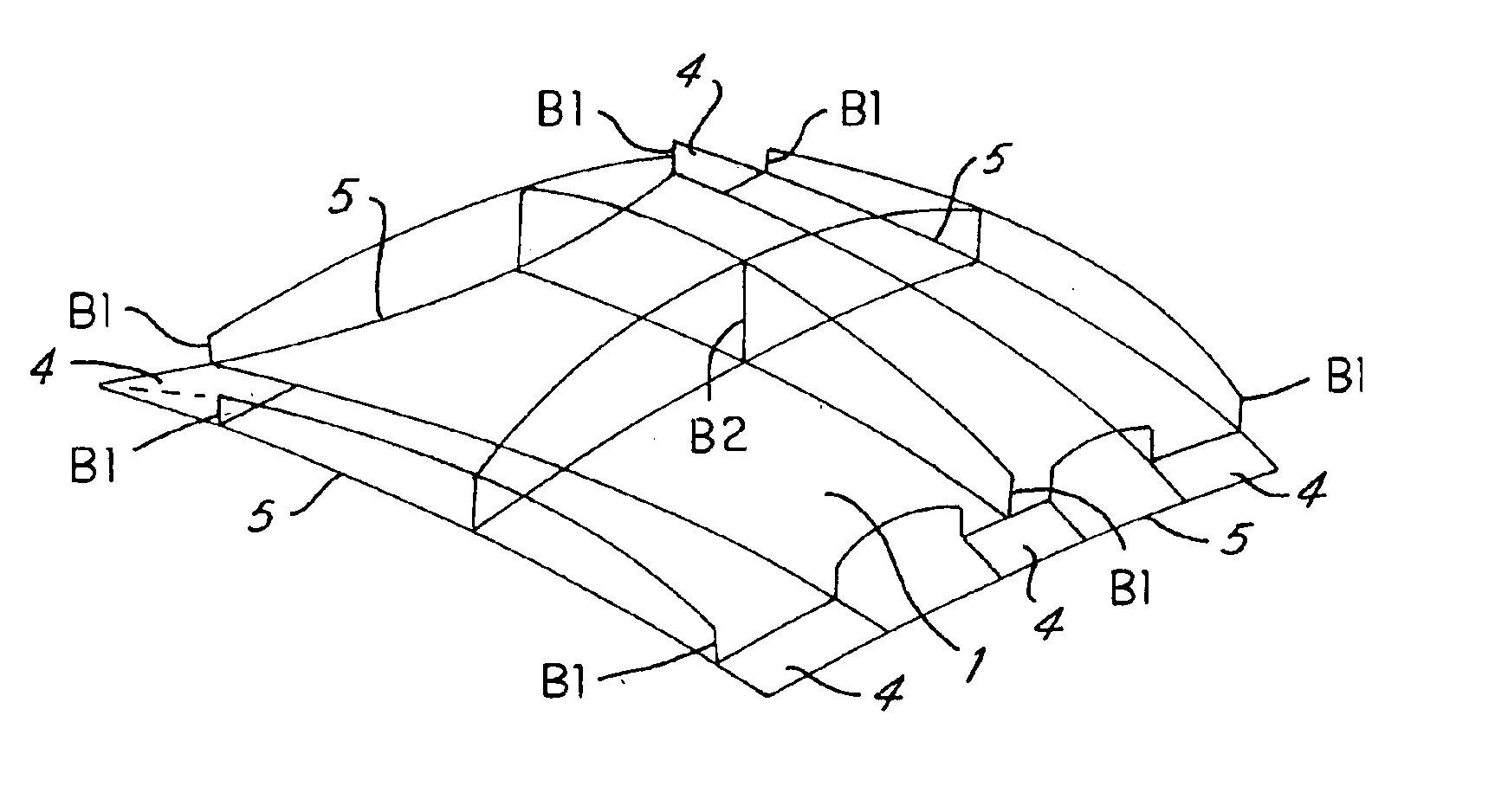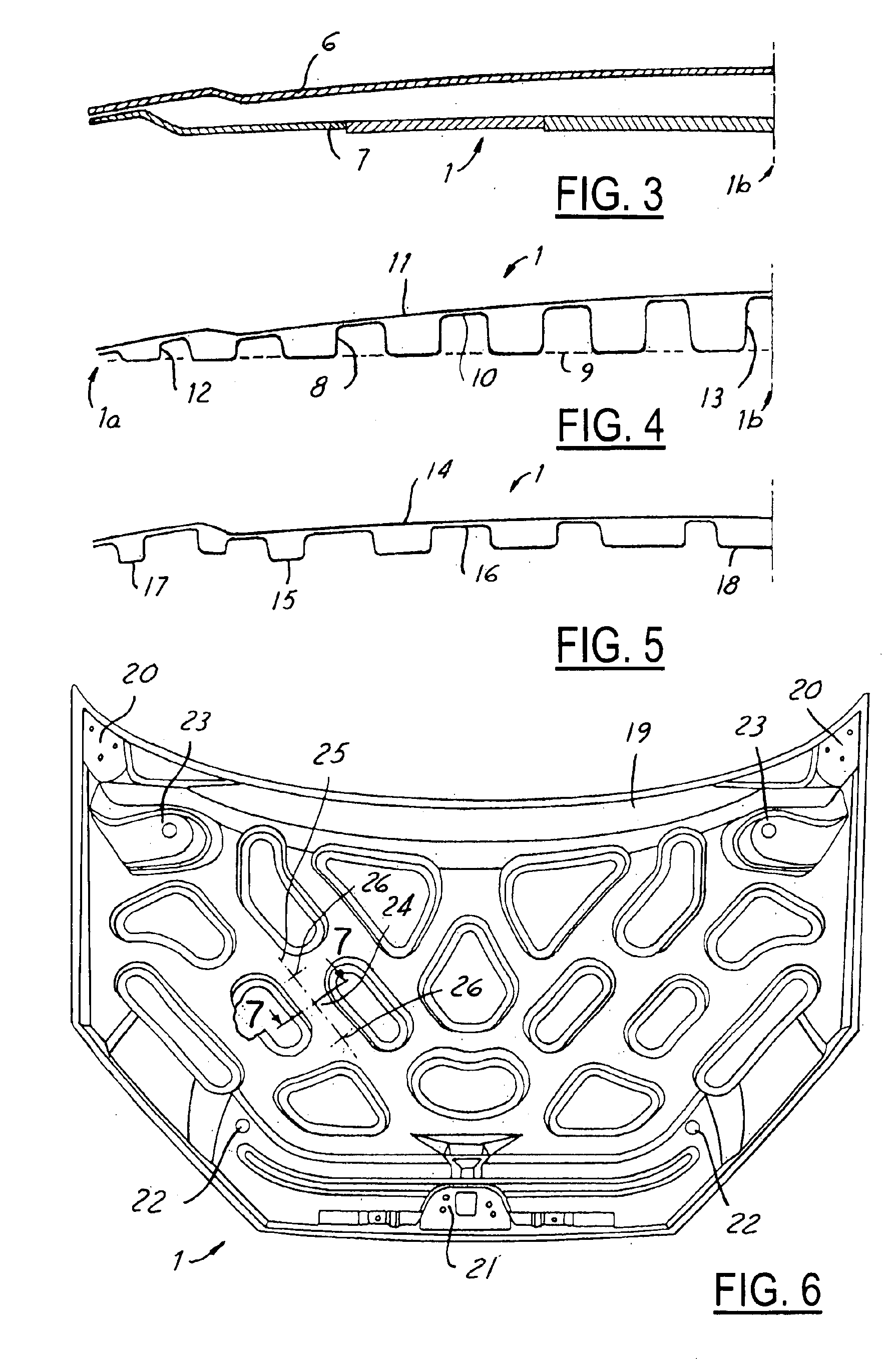Engine hood for motor vehicles for the protection of pedestrians
a technology for motor vehicles and engine hoods, applied in the direction of roofs, pedestrian/occupant safety arrangements, vehicular safety arrangements, etc., can solve the problems of lower flexural strength and head impact energy, and achieve the effect of better adaptation to the flexural strength profil
- Summary
- Abstract
- Description
- Claims
- Application Information
AI Technical Summary
Benefits of technology
Problems solved by technology
Method used
Image
Examples
Embodiment Construction
[0028]FIG. 1 shows the typical head impact region 2 for an engine hood 1. In this case, depending on the vehicle type, the front edge 3 of the head impact region is shifted forward to a greater or lesser extent. Also shown are the bearer regions 4 where the engine hood 1 is supported very rigidly relative to the vehicle during the head impact. The bearer regions 4 coincide with components such as hinges, locks, and stop buffers arranged under the engine hood.
[0029]The general profile of flexural strengths over the engine hood 1 is illustrated in FIG. 2. Adjacent the bearer regions 4, the flexural strength has approximately the value B1; in the middle region, the flexural strength is predominantly higher than or equal to the value B2; and in the regions between the bearer regions 4 and the middle region, the flexural strength is predominantly higher than the value B1 and lower than the value B2. At the same time, the strength profile is to the greatest possible extent continuous.
[003...
PUM
 Login to View More
Login to View More Abstract
Description
Claims
Application Information
 Login to View More
Login to View More - R&D
- Intellectual Property
- Life Sciences
- Materials
- Tech Scout
- Unparalleled Data Quality
- Higher Quality Content
- 60% Fewer Hallucinations
Browse by: Latest US Patents, China's latest patents, Technical Efficacy Thesaurus, Application Domain, Technology Topic, Popular Technical Reports.
© 2025 PatSnap. All rights reserved.Legal|Privacy policy|Modern Slavery Act Transparency Statement|Sitemap|About US| Contact US: help@patsnap.com



